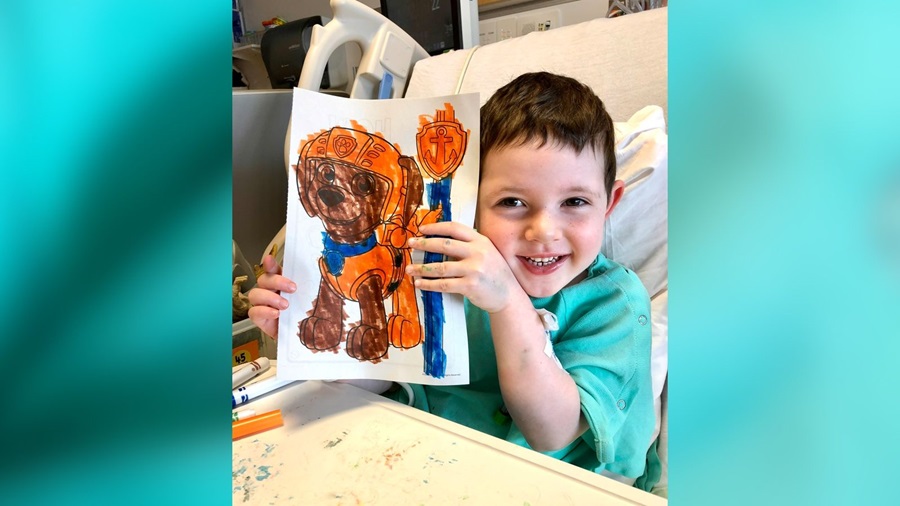Recent advancements in gene therapy have sparked newfound hope for individuals battling this debilitating condition. Historically, effective treatments for Duchenne Muscular Dystrophy have been limited, leaving families and medical professionals searching for viable solutions.
Duchenne muscular dystrophy (DMD) stands as a challenging genetic disorder characterized by progressive muscle degeneration and weakness. This condition, primarily affecting boys, results from mutations in the dystrophin gene, which plays a crucial role in maintaining muscle cell integrity. DMD’s onset typically occurs in early childhood, with symptoms manifesting around ages 2-3. As the disease progresses, it leads to significant morbidity and mortality, primarily due to muscle weakness and associated complications.
Symptoms and Causes 1
The hallmark symptom of DMD is progressive muscle weakness, initially affecting proximal muscles before spreading to distal limb muscles. Children with DMD may experience difficulty walking, running, and performing other motor tasks. Symptoms such as calf enlargement, a waddling gait, and lumbar lordosis are common. Over time, respiratory and cardiac muscles become compromised, leading to respiratory insufficiency and heart failure. The underlying cause of DMD lies in mutations within the dystrophin gene on the X chromosome. These mutations disrupt the production or function of dystrophin, resulting in fragile muscle cells that are prone to damage and degeneration.
Case Study 2

DMD has significantly impacted Lucas, a four-year-old boy, and his family. Despite being an active and energetic child, Lucas showed delays in gross motor development at an early age. His parents, Manuela Villa, and Luis Toro, started noticing signs such as delayed sitting, difficulty swallowing thin liquids, and the absence of crawling. These warning signals led Lucas’s parents to seek medical evaluation, which eventually resulted in his diagnosis of DMD. Dr. Partha Ghosh, Lucas’s physician at Boston Children’s Hospital, emphasized the importance of early intervention in DMD cases. Dr. Ghosh also discussed recent breakthroughs in DMD treatment, which could significantly improve the quality of life for patients like Lucas and their families.
Treatment Breakthrough 2
In a significant advancement, the FDA recently approved a groundbreaking gene therapy for boys aged 4-5 with DMD. This therapy can halt disease progression by addressing the underlying genetic defect. Lucas became the first patient in Massachusetts to receive this innovative treatment, marking a pivotal moment in DMD management. The therapy involves delivering an engineered mini-dystrophin gene using an adeno-associated virus vector through a one-time IV infusion. This approach aims to restore dystrophin production in muscle cells, enhancing muscle integrity and function.
Outcome and Hope 1,2
Following the gene therapy treatment, Lucas’s family witnessed remarkable improvements in his motor abilities. He demonstrated newfound skills such as independent car entry, scooter riding, and jumping, reflecting a positive response to the therapy. While it is still early to ascertain the therapy’s long-term effects, Lucas’s progress has instilled hope in his family and medical team. Dr. Ghosh emphasized the importance of continued monitoring and research to assess the therapy’s efficacy and safety over time.
Mechanism of Gene Therapy 3
DMD is a genetic disorder that results from the absence of dystrophin, a protein that helps maintain the structural integrity of muscles. Gene transfer therapy is an experimental treatment approach for DMD that involves introducing a mini-dystrophin gene into muscle cells using an adeno-associated virus (AAV) vector. This vector is a harmless virus that carries the therapeutic gene and delivers it to the nucleus of muscle cells. Once inside the nucleus, the engineered gene produces a mini-dystrophin protein that can partially compensate for the missing or dysfunctional dystrophin protein.
The mini-dystrophin gene used in this therapy is not a full-length dystrophin gene but contains essential functional elements critical for restoring muscle integrity. The therapy aims to mitigate muscle degeneration and improve overall muscle function in individuals with DMD by initiating the production of this mini-dystrophin protein. The goal of this treatment is to slow the progression of the disease and improve the quality of life for those affected by it. Although gene transfer therapy is a promising approach, it is still in the experimental stage, and more research is needed to determine its long-term safety and effectiveness.
Conclusion 1,2,3
Lucas’s case underscores the transformative potential of gene therapy in DMD treatment. While further research and long-term monitoring are warranted, early results offer promising prospects for individuals battling this devastating disease. As advancements in gene therapy continue to evolve, they hold the key to enhancing outcomes and quality of life for patients with DMD and other genetic disorders. Lucas’s story serves as a beacon of hope, inspiring ongoing efforts to combat DMD and improve the lives of affected individuals worldwide.
References
- Muscular Dystrophy Association . Duchenne Muscular Dystrophy (DMD) [Internet]. Muscular Dystrophy Association. 2018. Available from: https://www.mda.org/disease/duchenne-muscular-dystrophy
- Brown J. “Miracle:” Breakthrough treatment helping boy, 4, battle rare disorder [Internet]. WCVB. 2024 [cited 2024 Feb 01]. Available from: https://www.wcvb.com/article/new-duchenne-muscular-dystrophy-treatment-helps-boy-4-battle-rare-disorder/46574289
- Michaud M. New Gene Therapy for Duchenne Muscular Dystrophy a “Monumental Advance” [Internet]. URMC Newsroom. 2023. Available from: https://www.urmc.rochester.edu/news/story/new-gene-therapy-for-duchenne-muscular-dystrophy-a-monumental-advance
About Docquity
If you need more confidence and insights to boost careers in healthcare, expanding the network to other healthcare professionals to practice peer-to-peer learning might be the answer. One way to do it is by joining a social platform for healthcare professionals, such as Docquity.
Docquity is an AI-based state-of-the-art private & secure continual learning network of verified doctors, bringing you real-time knowledge from thousands of doctors worldwide. Today, Docquity has over 400,000 doctors spread across six countries in Asia. Meet experts and trusted peers across Asia where you can safely discuss clinical cases, get up-to-date insights from webinars and research journals, and earn CME/CPD credits through certified courses from Docquity Academy. All with the ease of a mobile app available on Android & iOS platforms!







